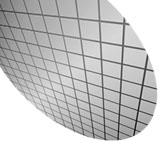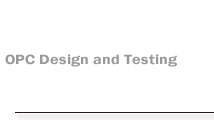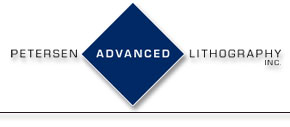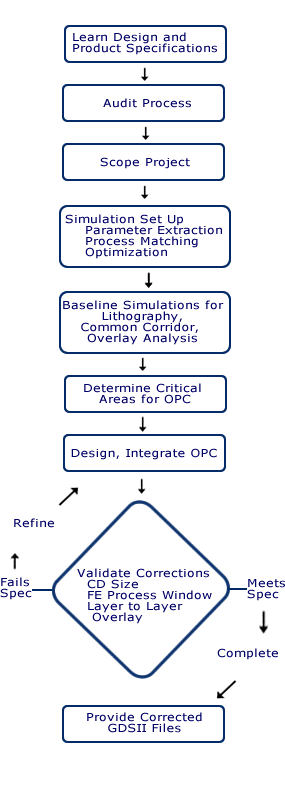


 |
 |
 |
 |
 |
 |
 |
PAL not only
helps you determine what types of OPC will work best for the designs you
want to use, but also helps you validate OPC solutions for a single
process layer or an entire cell. PAL uses high powered lithography simulators
to test mask corrections under conditions carefully designed to replicate
your unique fabrication process. 
1. Client completes a comprehensive survey identifying critical aspects of their lithography process: stepper type, illumination scheme, resist type, and the like. The client describes desired results, such as cd size, overlay constraints, duty cycle, and process latitude, and provides PAL with an original GSDII file for each process layer.
2.
PAL audits the process to determine its potential to achieve the desired
results, based on 20+ years of industry experience in microlithography.
(If the audit shows that the process spec is probably unachievable, we'll
tell you so, and explain why; perhaps our IIS
services might be more appropriate.)
3. PAL creates a project plan and devises an acceptable
project schedule.
4. PAL uses the client's fab data to fine-tune lithography
models to provide the most accurate predictions possible.
5. PAL uses the most advanced lithography simulation
tools available to perform initial simulations, including KLA-Tencor's
PROLITH/3D, ProMAX, and ProDATA, and Panoramic Technologies' TEMPEST.
6.
PAL identifies critical areas for OPC—which aspects of the design
will probably need adjustment, and which are likely to meet process specifications
without correction.
7. PAL designs OPC solutions and integrates them
into a new mask file, using techniques such as serifs, hammerheads, sub-resolution
assist features and the like, while considering maskmaking limitations
and using the simplest, least expensive mask designs possible.
8.
PAL tests the corrected mask files for each layer using the optimized
simulation parameters. If the results from the corrected masks do not
meet the client's specifications, the masks are refined and re-tested
until the specifications are met. When each layer has been refined as
much as necessary, PAL performs an overlay test using KLA-Tencor’s
ProDATA software. Overlay testing is important because different imaging
schemes and feature types sample imaging system aberrations differently.
9. PAL delivers the corrected GDSII mask files
to the client or designated maskmaker, and provides documentation of the
testing process and appropriate simulation data.
|
© 2003 Petersen Advanced Lithography, Inc. |